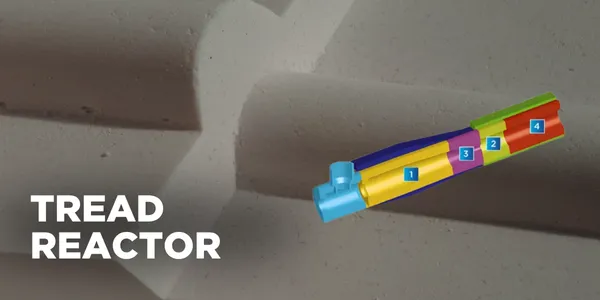Industrieller Ruß
Saint-Gobain Performance Ceramics & Refractories ist seit über drei Jahrzehnten ein führender Anbieter von kompletten feuerfesten Auskleidungen für Rußreaktoren.
Es gibt eine Reihe von kundenspezifischen Lösungen für Verschleißschicht und Hinterisolierung von Tread- und Carcass-Reaktoren. Diese umfassen:
- Gegossene Fertigbauteile oder gebrannte Normalien und Formsteine aus Chrom-Aluminiumoxid
- Hochreine Tonerde-Steine in den Qualitäten AH199, AL100 und Alfrax101
- Thermoschockbeständige Mullfrax® -Steine
- Zirnorite® Zirkonia-Steine für höchste Temperaturbeständigkeit
- Schmelzgegossene Jargal M-Formen für höchste Erosionsbeständigkeit
- Isolierende und dichte Gießmassen für die Hinterisolierung
Reaktorbasierte Lösungen
Klicken Sie auf Tread-Reaktor, um mehr zu erfahren:
Tailored Engineering for Reactor Optimization
Since carbon black reactors differ in geometry, temperature gradients, and gas flow they require refractory systems that perform reliably regardless of where they are installed within the reactor. We offer customized linings that align with each client’s operating profile, temperature range, and feedstock chemistry. With the application of advanced thermal modeling and shape design our refractory linings can enhance reactor temperature uniformity, support consistent process conditions, and extend maintenance intervals for improved operational reliability.
Reactor Applications
Our carbon black reactor solutions are designed for both tread and carcass reactors, where precise temperature control and material durability are essential:
- Tread reactors: Ziral™, Zirnorite®, and Jargal M can be used in combustion and choke zones in carbon black reactors to resist erosion and thermal shock, ensuring consistent temperature control and preserving mechanical strength for extended lining life.
- Carcass reactors: Mullfrax® 202 HF, AL102, and Alundum® AH199 provide thermal shock resistance and durability in reaction and quench zones, while backup layers made with Supcast® and RI34HR castables enhance insulation, reduce heat loss, and maintain structural stability throughout reactor operation.
Integrating these materials can help manufacturers achieve higher yield, lower energy consumption, and stable, efficient operation throughout carbon black processing.

